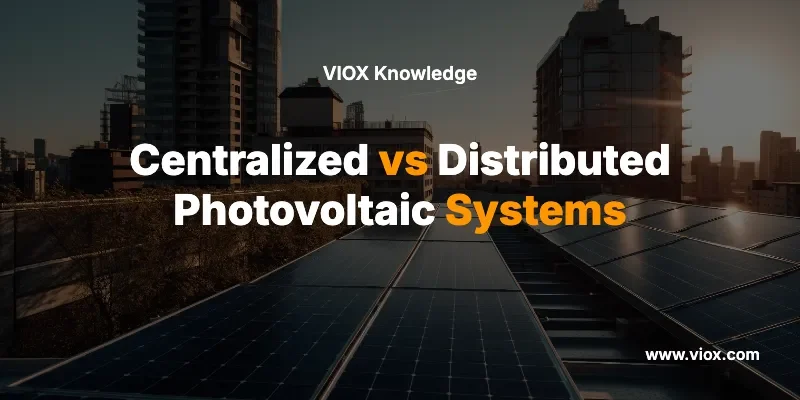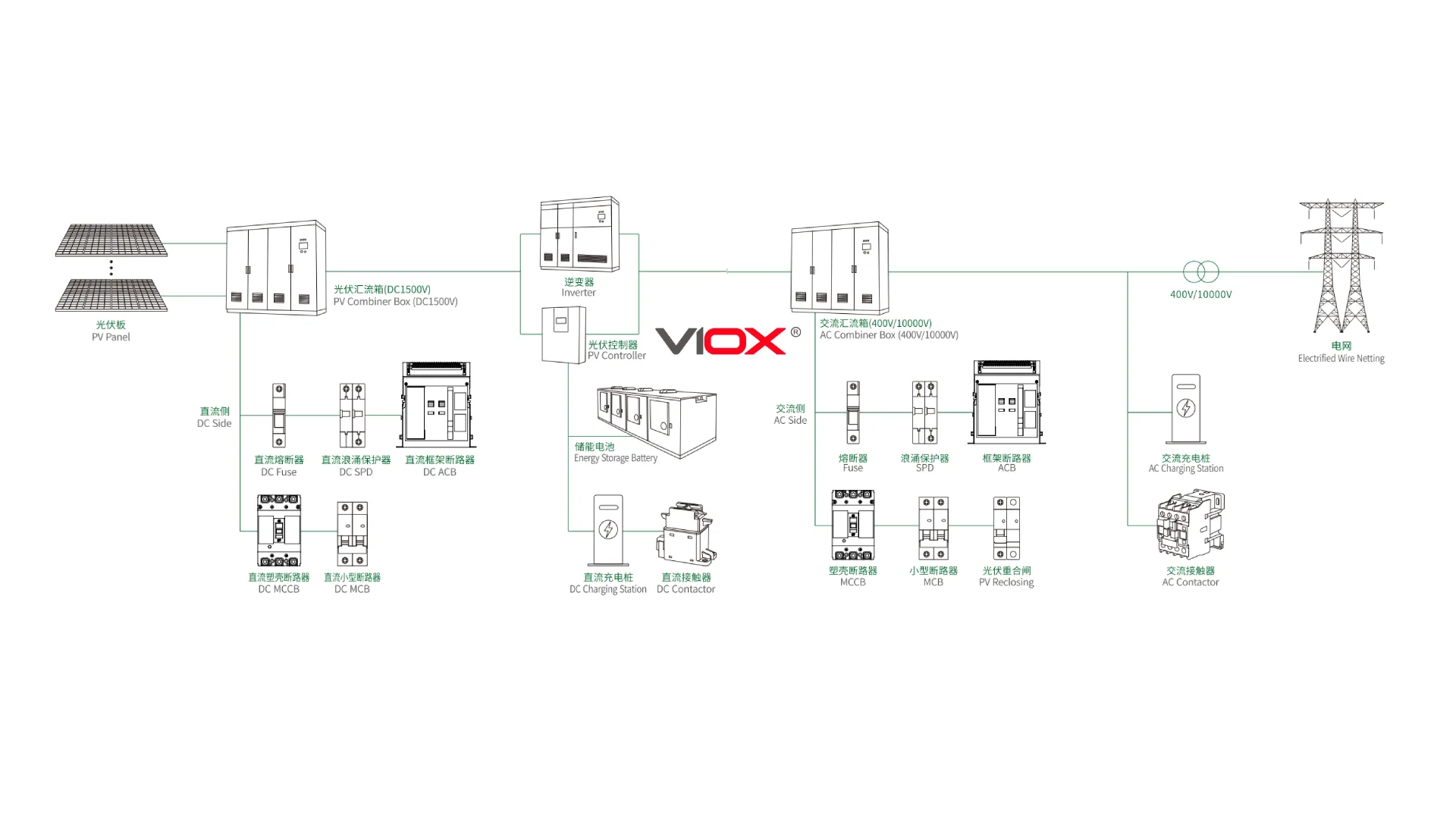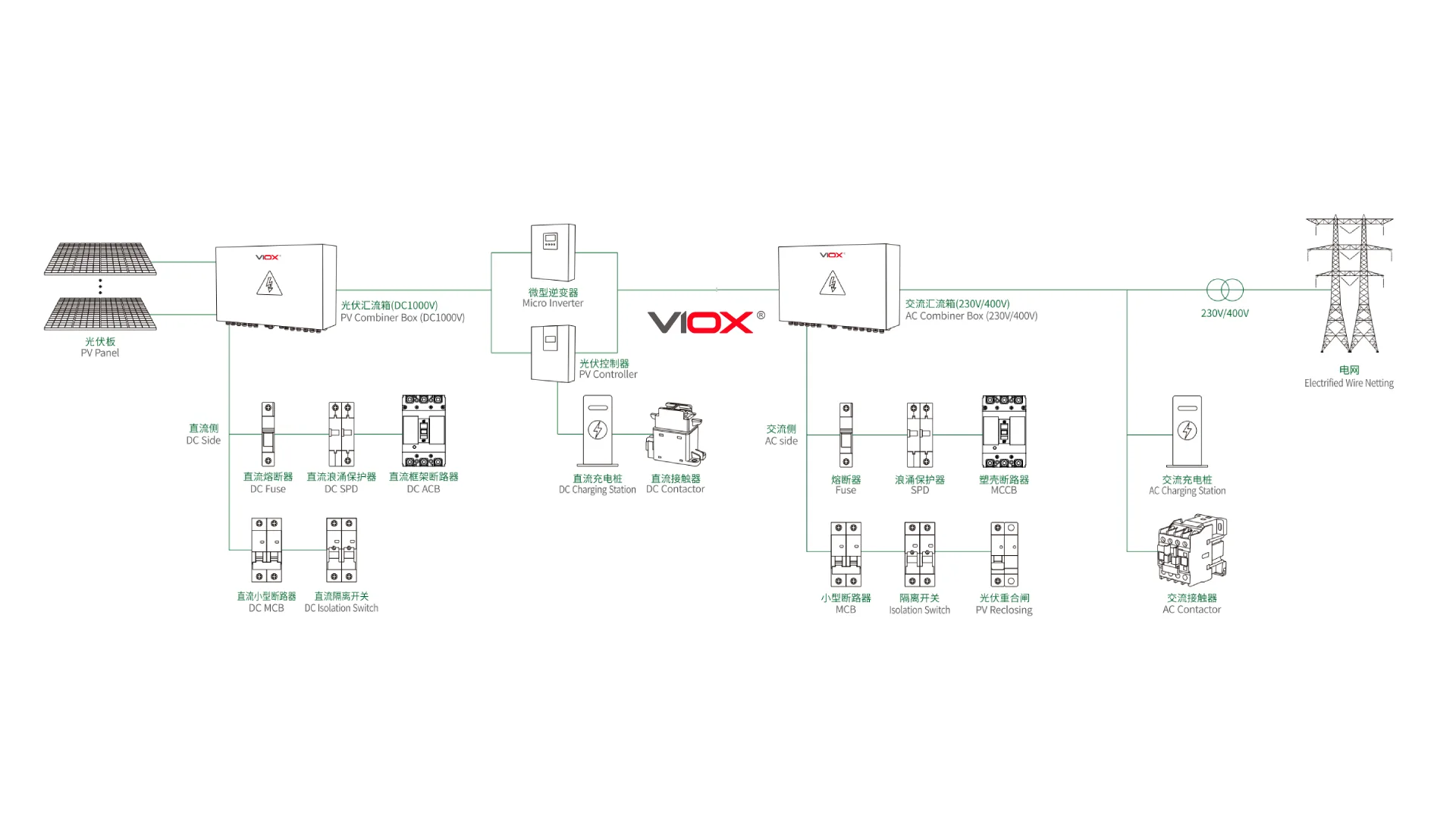Közvetlen válasz: Centralized photovoltaic systems are large-scale solar installations that generate electricity for wide distribution through the electrical grid, while distributed/household photovoltaic systems are smaller installations located at or near the point of energy consumption. The key difference lies in scale, ownership, grid integration, and energy distribution methods.
Understanding these two solar energy approaches is crucial for making informed decisions about renewable energy investments, whether you’re a homeowner, business owner, or policy maker evaluating solar energy options.
What Are Photovoltaic Systems? Key Definitions
Centralized Photovoltaic Systems
Centralized photovoltaic systems are large-scale solar power plants, typically ranging from 1 MW to over 1000 MW in capacity. These utility-scale installations are designed to generate electricity for transmission through high-voltage power lines to multiple end users across wide geographic areas.
Distributed/Household Photovoltaic Systems
Distributed photovoltaic systems, including household installations, are smaller-scale solar energy systems installed at or near the location where electricity is consumed. These systems typically range from 3 kW to 50 kW for residential applications and up to several hundred kW for commercial distributed systems.
💡 Szakértői tipp: The distinction between centralized and distributed solar isn’t just about size—it’s about energy flow direction, ownership models, and grid integration strategies.
Comprehensive System Comparison
Here is a table that shows the key differences between centralized and distributed photovoltaic systems:
| Jellemző | Centralized PV Systems | Distributed/Household PV Systems |
|---|---|---|
| System Size | 1 MW – 1000+ MW | 3 kW – 500 kW |
| Telepítés helye | Remote utility-scale sites | Rooftops, near consumption points |
| Ownership Model | Utilities, IPPs, large investors | Individual homeowners, businesses |
| Grid Connection | Nagyfeszültségű távvezetékek | Local distribution grid |
| Energy Distribution | Wide geographic area | Local consumption first |
| Telepítési költség | $0.80-$1.20 per watt | $2.50-$4.00 per watt |
| Permitting Complexity | High (environmental, zoning) | Moderate (local building permits) |
| Construction Timeline | 2-4 years | 1-6 months |
| Economies of Scale | Maximum efficiency | Limited by site constraints |
| Grid Stability Impact | Centralized generation risk | Enhanced grid resilience |
| Energy Storage | Large-scale battery systems | Individual battery systems |
Detailed Technical Specifications Comparison
Power Generation and Efficiency
Centralized Systems:
- Power output: 1 MW to 2,245 MW (world’s largest)
- System efficiency: 18-22% (utility-grade panels)
- Capacity factor: 15-35% depending on location
- Land requirement: 5-10 acres per MW
Distributed Systems:
- Power output: 3 kW to 500 kW typical
- System efficiency: 15-20% (residential panels)
- Capacity factor: 12-25% depending on roof orientation
- Space requirement: 70-100 sq ft per kW
⚠️ Safety Note: Both system types must comply with IEEE 1547 interconnection standards and local electrical codes for safe grid integration.
Valós alkalmazások és használati esetek
When Centralized PV Systems Work Best
- Utility-Scale Energy Generation
- Large power companies serving hundreds of thousands of customers
- States with renewable portfolio standards requiring bulk clean energy
- Areas with abundant land and high solar irradiance
- Industrial Power Purchase Agreements
- Large manufacturers requiring consistent, cost-effective power
- Data centers with massive energy demands
- Mining operations in remote locations
- Grid-Scale Energy Storage Integration
- Utility companies balancing renewable intermittency
- Regional grid stabilization projects
- Large-scale backup power systems
When Distributed/Household PV Systems Excel
- Residential Energy Independence
- Homeowners seeking to reduce utility bills
- Areas with high electricity rates and net metering
- Properties with optimal roof orientation and minimal shading
- Commercial Self-Consumption
- Businesses with daytime energy usage patterns
- Retail establishments with suitable roof space
- Manufacturing facilities seeking cost control
- Microgrid and Resilience Applications
- Critical facilities requiring backup power
- Remote locations without reliable grid access
- Communities prioritizing energy security
💡 Szakértői tipp: The best choice depends on your specific energy needs, available space, budget, and local utility policies.
Lépésről lépésre kiválasztási útmutató
How to Choose Between Centralized and Distributed Solar
Step 1: Assess Your Energy Needs
- Calculate annual electricity consumption
- Identify peak usage patterns
- Determine backup power requirements
Step 2: Evaluate Available Space and Resources
- Measure available installation area
- Assess solar resource potential (sun hours)
- Consider zoning and permitting restrictions
Step 3: Analyze Financial Options
- Compare upfront investment requirements
- Research available incentives and financing
- Calculate long-term return on investment
Step 4: Consider Grid Integration Requirements
- Review local interconnection policies
- Understand net metering availability
- Assess grid stability and reliability needs
Step 5: Plan for Future Expansion
- Consider scalability requirements
- Plan for battery storage integration
- Evaluate maintenance and monitoring needs
Benefits and Advantages Analysis
Centralized PV System Benefits
Gazdasági előnyök:
- Lowest cost per watt due to economies of scale
- Professional procurement and installation
- Bulk purchasing power for components
Technical Benefits:
- Maximum system efficiency and performance
- Professional monitoring and maintenance
- Grid-scale energy storage integration
Grid Integration:
- Simplified utility planning and dispatch
- Reduced transmission losses in optimal locations
- Enhanced grid stability through centralized control
Distributed/Household PV Benefits
Gazdasági előnyök:
- Direct ownership and energy bill reduction
- Net metering credits and energy independence
- Property value enhancement
Technical Benefits:
- Reduced transmission losses
- Enhanced grid resilience and reliability
- Customizable system sizing
Environmental Impact:
- Utilizes existing building structures
- Minimal additional land use requirements
- Supports local energy production
⚠️ Safety Consideration: All distributed systems must include rapid shutdown capabilities per NEC 690.12 for firefighter safety.
Installation and Implementation Guidelines
Centralized System Development Process
- Site Selection and Land Acquisition (6-12 months)
- Environmental impact assessments
- Transmission interconnection studies
- Zoning and permitting applications
- System Design and Engineering (3-6 months)
- Detailed electrical and structural design
- Grid interconnection agreements
- Equipment procurement planning
- Construction and Commissioning (12-24 months)
- Site preparation and infrastructure
- Panel installation and electrical work
- Testing and grid interconnection
Distributed System Installation Process
- Site Assessment and Design (2-4 weeks)
- Roof structural evaluation
- Electrical system assessment
- System sizing and layout design
- Permitting and Approvals (2-8 weeks)
- Építési engedélykérelmek
- Utility interconnection agreements
- Homeowner association approvals (if applicable)
- Installation and Commissioning (1-3 days)
- Equipment delivery and installation
- Electrical connections and safety testing
- Utility meter installation and activation
Gyakori kihívások és hibaelhárítás
Centralized System Challenges
Development Obstacles:
- Complex environmental permitting processes
- Transmission line upgrade requirements
- Community opposition and NIMBY concerns
Megoldások:
- Early stakeholder engagement and communication
- Comprehensive environmental mitigation planning
- Strategic site selection near existing infrastructure
Distributed System Challenges
Installation Issues:
- Roof structural limitations
- Shading from trees or buildings
- Electrical panel upgrade requirements
Megoldások:
- Professional structural engineering assessment
- Strategic panel placement and micro-inverter use
- Electrical system upgrades before installation
💡 Szakértői tipp: Always work with certified installers who maintain proper licensing and insurance for your system type.
Cost Analysis and Financial Considerations
Total Cost of Ownership Comparison
Centralized Systems:
- Capital cost: $0.80-$1.20 per watt installed
- Operations and maintenance: $15-$25 per kW per year
- Financing: Power purchase agreements or utility ownership
- Payback period: 7-12 years for utility investors
Distributed Systems:
- Capital cost: $2.50-$4.00 per watt installed
- Operations and maintenance: $150-$300 per year
- Financing: Cash purchase, loans, or leasing options
- Payback period: 6-10 years for homeowners
A befektetés megtérülésének tényezői
- Local Electricity Rates
- Available Incentives and Tax Credits
- Net Metering Policies
- System Performance and Degradation
- Financing Terms and Interest Rates
Safety and Compliance Requirements
Nemzeti Villamos Szabályzat (NEC) megfelelőség
Both centralized and distributed systems must comply with:
- NEC Article 690: Solar Photovoltaic Systems
- NEC 690.12: Rapid Shutdown Requirements
- NEC 690.35: Grounding Requirements
- Local amendments and modifications
IEEE szabványok
- IEEE 1547: Interconnection and Interoperability Standards
- IEEE 1547.1: Conformance Test Procedures
- UL 1741: Inverter Safety and Performance Standards
⚠️ Fontos biztonsági figyelmeztetés: Only qualified, licensed electricians should perform electrical connections and system commissioning. Improper installation can result in fire, electrocution, or equipment damage.
Future Trends and Technology Evolution
Emerging Technologies
Grid Integration Advances:
- Smart inverter technologies
- Advanced energy storage systems
- Vehicle-to-grid integration capabilities
System Performance Improvements:
- Bifacial solar panel technologies
- Artificial intelligence optimization
- Predictive maintenance systems
Piaci fejlemények
- Community solar programs bridging centralized and distributed benefits
- Virtual power plant aggregation technologies
- Peer-to-peer energy trading platforms
Gyakran Ismételt Kérdések
What makes centralized PV systems more cost-effective than distributed systems?
Centralized systems achieve lower costs through economies of scale, bulk equipment purchasing, professional installation, and optimized site selection. Large-scale installations can negotiate better pricing for panels, inverters, and installation services.
Can I combine distributed solar with centralized utility solar programs?
Yes, many utilities offer community solar programs that allow customers with distributed systems to also participate in larger centralized projects. This provides additional clean energy access without requiring individual system expansion.
What happens to distributed systems during power outages?
Most distributed systems automatically shut down during grid outages for safety reasons. Systems with battery storage and proper disconnection equipment can continue operating in island mode to power critical loads.
How do net metering policies affect the choice between systems?
Net metering policies that provide full retail credit for excess distributed generation make household systems more financially attractive. Changes to net metering can shift economics toward centralized utility-scale development.
What size distributed system do I need for my home?
System size depends on your annual electricity usage, available roof space, and energy goals. A typical home uses 10,000-12,000 kWh annually, requiring a 7-10 kW system in most locations.
Are there financing options for both system types?
Yes, centralized systems use utility financing, power purchase agreements, and institutional investment. Distributed systems offer cash purchase, solar loans, leasing, and power purchase agreements for homeowners.
How do weather and location affect system performance?
Both systems perform better in areas with high solar irradiance and minimal weather interference. Distributed systems are more affected by local shading and orientation, while centralized systems can optimize site selection for maximum performance.
What maintenance is required for each system type?
Centralized systems require professional monitoring and maintenance teams. Distributed systems need minimal maintenance but benefit from annual inspections and periodic cleaning, especially in dusty environments.
Expert Selection Criteria and Decision Framework
Choose Centralized PV When:
- You represent a utility or large energy buyer
- Massive scale energy generation is required
- Professional operation and maintenance is preferred
- Long-term power purchase agreements are acceptable
- Environmental and regulatory approvals are manageable
Choose Distributed/Household PV When:
- You own suitable property with good solar exposure
- Energy independence and bill reduction are priorities
- Net metering policies provide fair compensation
- Upfront investment capital is available
- Local permitting processes are streamlined
💡 Final Expert Recommendation: The future of solar energy likely involves both centralized and distributed systems working together. Centralized systems provide bulk clean energy generation, while distributed systems enhance grid resilience and provide individual energy independence.
Professional Next Steps
For Centralized Solar Development:
- Consult with utility-scale solar developers
- Engage environmental and permitting consultants
- Review power purchase agreement opportunities
For Distributed Solar Installation:
- Request quotes from certified solar installers
- Evaluate financing options and available incentives
- Schedule professional site assessments
Ne feledd: Both system types require professional expertise for optimal design, installation, and operation. Work with qualified professionals who understand local codes, utility requirements, and safety standards to ensure successful solar energy implementation.
*This comprehensive guide provides authoritative information for solar energy decision-making. For specific project requirements, consult with qualified solar professionals and local authorities having jurisdiction.*




